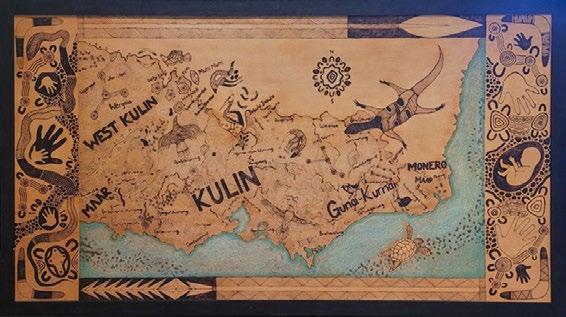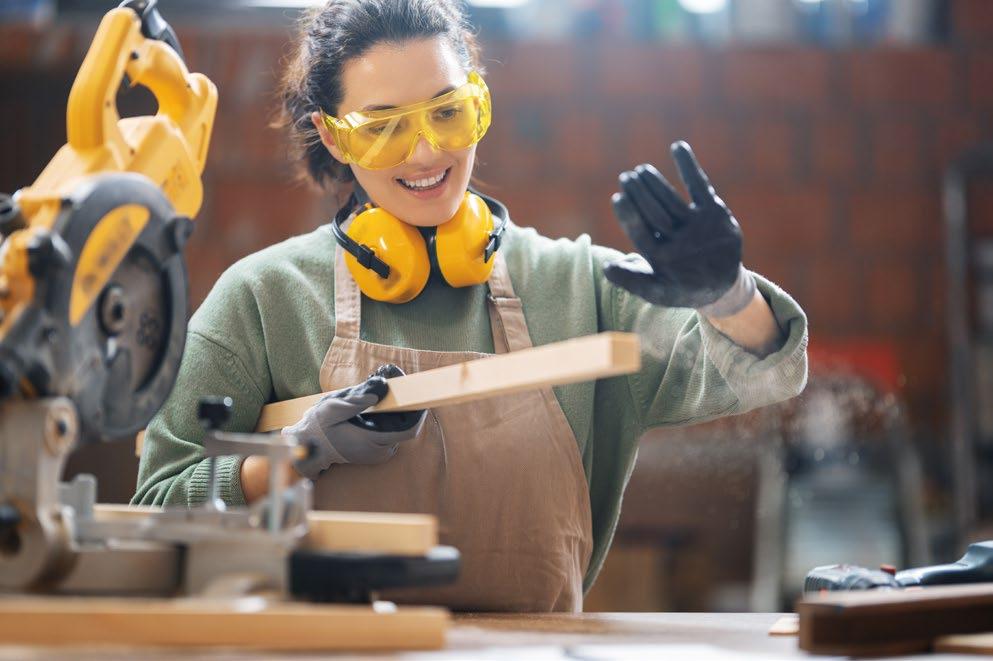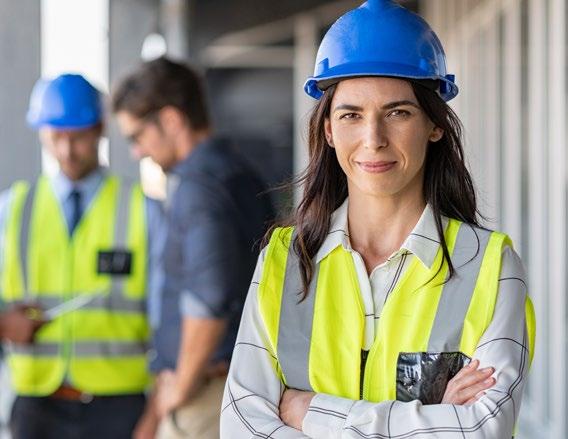
5 minute read
Our team
MBV TAKING STEPS TOWARDS RECONCILIATION
Reconciliation relates to strengthening and enhancing the relationships between First Nations peoples and non-Indigenous peoples to foster Australia’s more just and inclusive society. At MBV, we recognise the importance of reconciliation for the broader Australian community and the building and construction industry and its significance for our country’s future. As the peak body for Victoria’s building and construction sector, MBV has a crucial role in progressing reconciliation within our industry. Promoting and participating in reconciliation is also closely aligned with MBV’s values and purpose of driving positive change and empowering people to build a better future. Overall, the building and construction sector is also one of the top employment industries for working-age First Nations peoples. We are aware that real change must occur to tackle inequality and racism and, in doing so, will begin to build strong relationships between First Nations and nonindigenous Australians. As an organisation, we are still in the early stages of our reconciliation journey and aim to genuinely contribute to advancing reconciliation internally and within our sector. We have started to make real commitments toward our ambition and are delivering on these commitments by undertaking various initiatives to build a greater understanding, awareness and respect for First Nations peoples and cultures. Some of these initiatives include cultural awareness training for team members, introducing an Acknowledgement of Country at the beginning of our meetings and Welcome to Country at our events.
Those visiting our East Melbourne office will likely notice new artwork on the ground floor commissioned by First Nations artist Jade Kennedy of Mutti Mutti, Tatti Tatti, Waddi Waddi, and Noongar descent. The wood burn piece is a mapbased artwork depicting the Traditional Owners of Country across Victoria and each area’s local nations and totems.
As part of these steps towards reconciliation, we established a Working Group in 2021 to develop MBV’s first Reconciliation Action Plan (RAP). Two external consultants worked on the project, Adam Magennis from Kaptify and Meg Mundell from Hatch Productions.
The result is our inaugural Reflect RAP.
This public document states MBV’s practical, meaningful, and measurable steps to sustainably and strategically advance reconciliation. As a member of the RAP network, MBV will focus on strengthening the connections established with several First Nations organisations during the development of this RAP while also building new partnerships and opportunities for collaboration to continue to progress reconciliation. A core component of our collaboration with Aboriginal organisations and businesses will be to develop an industry education initiative about the importance of protecting and managing Aboriginal cultural heritage. We hope this work can further increase our collective awareness of people and Country, particularly given our sector’s direct effect on Country and the impact on Aboriginal cultural heritage. MBV will continue to raise awareness, champion First Nations peoples, heritage and cultures, and promote best practices within our organisation and industry. This is the first step to welcome change and understand that this journey will take work and time.

VIEW MBV’S RECONCILIATION ACTION PLAN
ATTRACTING MORE WOMEN

into building and construction
MBV is committed to promoting gender equity in the building and construction sector.
Building and construction has predominately been maledominated, but that needs to change for our industry to reduce skills shortages and have a thriving and sustainable future. More women are active in the Victorian labour market now than in the past, but they still only make up just 1.9 per cent (2,389) of all Victorian construction trade workers as of May 2022. Worryingly, female participation in the building and construction industry has not changed significantly since the 1980s. To improve this, more women must be made aware that building and construction is an attractive and viable career option. The share of female apprentice commencements in building and construction was 5.4 per cent in Victoria from December 2021. However, retaining this number of women in trades has been a challenge. MBV supports initiatives to ensure women can become fully qualified, well-paid tradespeople. We also know that boosting the number of women in traditionally male-dominated industries will go some way to closing the gender pay gap. As a member of the Victorian Government’s Building Industry Consultative Council (BICC), MBV has been working with others in this group, including LendLease, Multiplex and Master Plumbers, to advocate for more women in the building and construction industry. Earlier this year, MBV CEO Rebecca Casson was appointed as Chairperson of the BICC. This is another historic moment for MBV and our industry to see a woman appointed to a critical leadership position in the building and construction sector. The BICC has identified a real need for serious steps to increase the number of women employed in our industry, overseeing the development and delivery of the Building Gender Equality: Victoria’s Women in Construction Strategy 2019-2022.` The Strategy has been developed after extensive research and consultation with people across our industry, all of whom are committed to making it a success. Implementing Victoria’s Women in Construction Strategy and the Construction Industry Gender Equality Policy will guide businesses to access 50 per cent of the population. Increasing the participation of women in building and construction impacts industry sustainability and innovation and positively influences the employment choices, financial stability, and well-being of many Victorian women.
To achieve gender equity, substantial changes to industry culture, practices, attitudes, and behaviours are necessary. These changes will only be realised through collaborative and sustainable business partnerships between Government, employers, employees, industry associations and unions.
Increasing the potential pipeline of women wanting to work in building and construction requires a concerted, whole-ofindustry approach to sourcing, attracting, training, and retaining women workers.
We know this is only the beginning of this change journey, and we are committed to seeing more women in our industry. Greater diversity strengthens our workplaces, and a better representation of women in building and construction will benefit everyone in our sector. Everyone has a stake in making gender equality a reality.
VIEW NEWS CLIPPINGS FEATURING MBV & WOMEN IN CONSTRUCTION
SEE SOME STATS ON WOMEN IN THE BUILDING & CONSTRUCTION INDUSTRY


